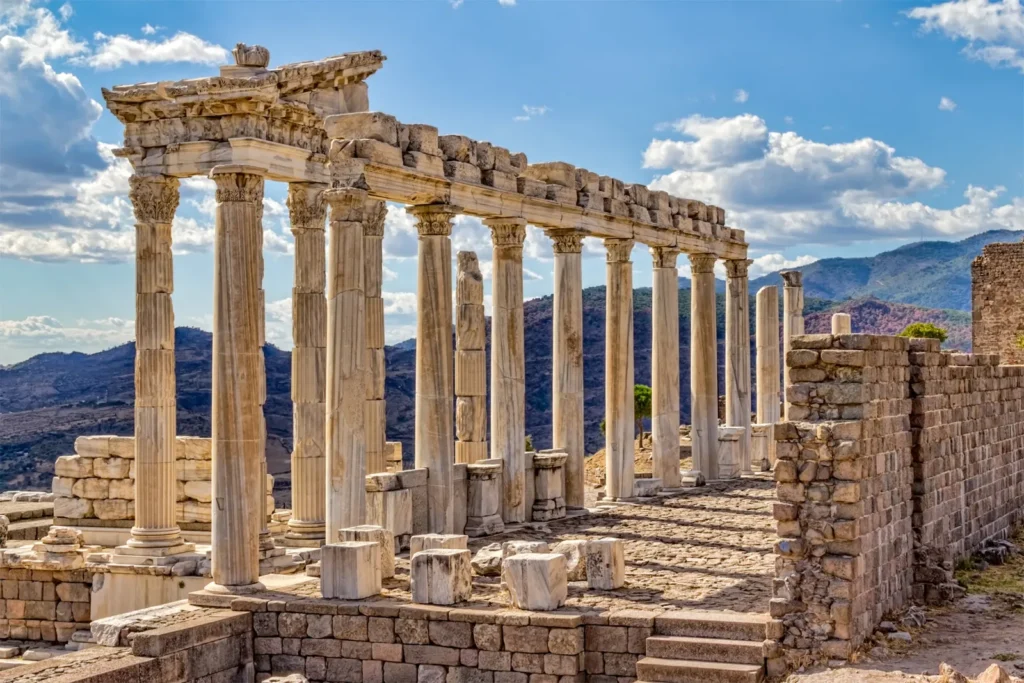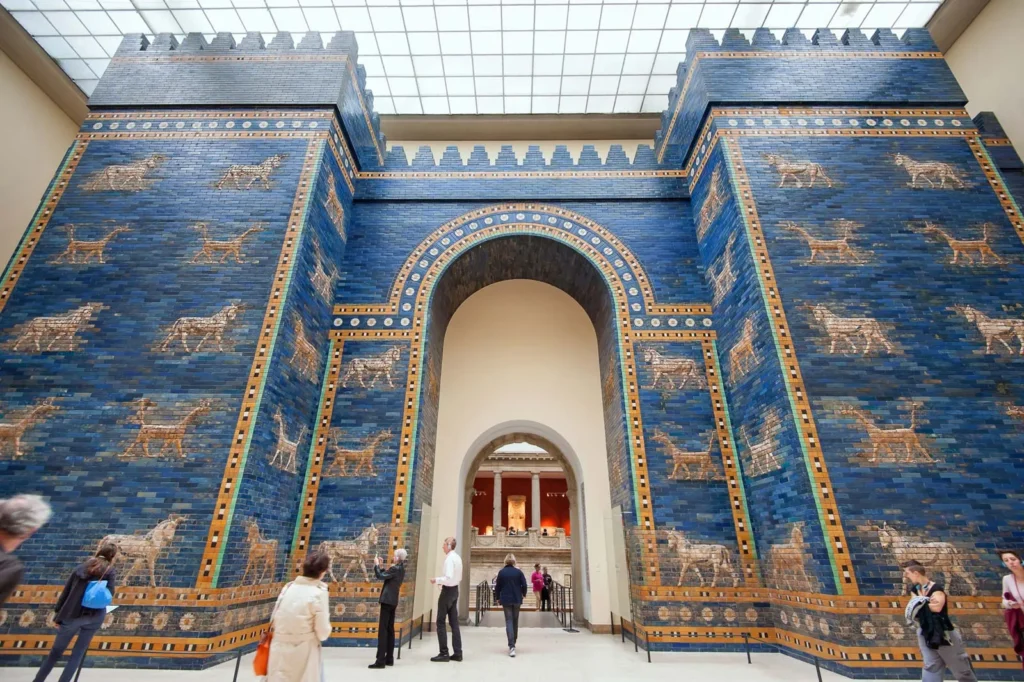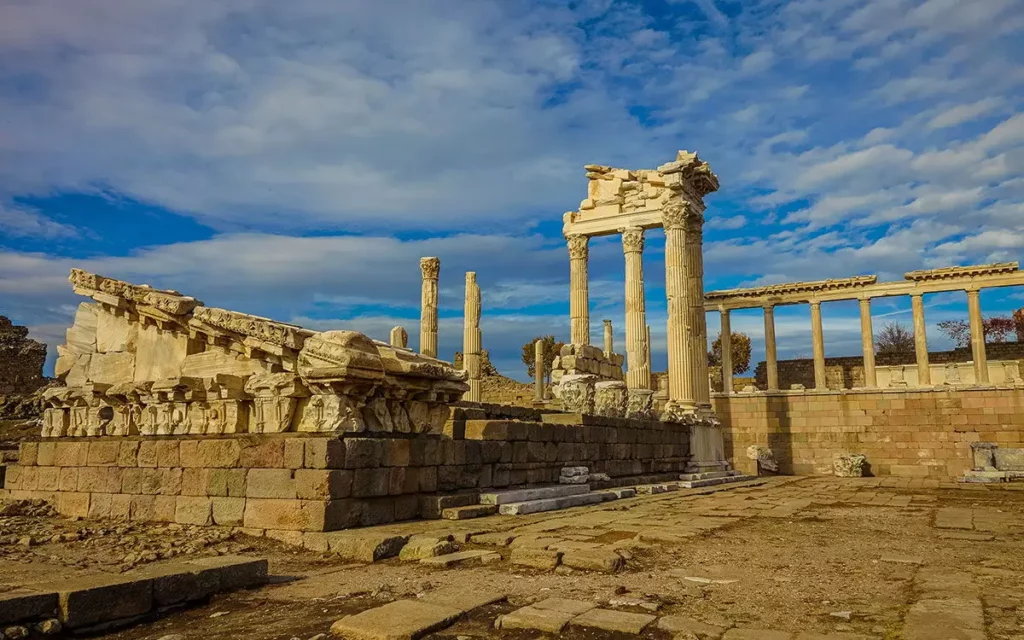Where is Pergamon located today?
A: Pergamon is in present-day Turkey, near the modern town of Bergama in the province of Izmir, in the western part of the country.
In which region of Turkey is Pergamon located?
A: Pergamon is in the Aegean region of Turkey. This region is known for its historical significance and scenic beauty along the Aegean coast.

How far is Pergamon from the city of Izmir?
A: Pergamon is approximately 120 kilometres (about seventy-five miles) north of Izmir, one of the largest cities in Turkey. The journey by road takes about 1.5 to 2 hours, making it a feasible day trip for tourists staying in Izmir.
Who founded the ancient city of Pergamon and when?
A: Pergamon, also known as Pergamum, was founded by the Greek commander and statesman Philetaerus in the third century BC. He founded the Attalid dynasty, which ruled the city and surrounding area for several generations.

What is the historical importance of Pergamon?
A: Pergamon was an important ancient Greek and Roman city in modern Turkey. It was famous for its cultural, artistic, and intellectual achievements. Pergamon was also an important centre of learning and scholarship, home to an important library that rivalled the Library of Alexandria.
Who were the Attalids and what was their role in the history of Pergamon?
A: The Attalids were the ruling dynasty of Pergamon. They were a wealthy and powerful family who contributed to the development of the city. Under their rule, Pergamon became a major cultural and artistic centre, known for its impressive architecture, including the famous Pergamon Altar.
What are Pergamon’s most notable architectural achievements?
A: Pergamon was famous for its remarkable architecture, including the Pergamon Altar, a monumental building dedicated to Zeus and Athena. The city also boasted a magnificent theatre, an impressive library, and an acropolis, all of which reflected the advanced engineering and artistic skills of the time.
How did Pergamon’s history unfold during the Roman period?
A: During the Roman period, Pergamon continued to thrive as a significant urban center. It served as the capital of the Roman province of Asia and retained its cultural and architectural importance. The city’s renowned library and healing center, dedicated to the god Asclepius, attracted visitors from across the Roman Empire, making Pergamon a hub of intellectual and medical activity.
What is the historical significance of the ancient city of Pergamon in Bergama?
A: Pergamon, located in modern-day Bergama, Turkey, was one of the most important cities in the ancient world. It was a centre of culture, learning and art. Pergamon was famous for its library, the second largest in the ancient world after Alexandria, and its healing centre, the Asklepion, which attracted patients from all over the Mediterranean. The city was also known for its impressive architecture, including the Acropolis and the Great Altar of Zeus.

How can visitors explore the historical sites of Pergamon in Bergama today?
A: Visitors can explore the ancient city of Pergamon, now in Bergama, Turkey, by visiting the archaeological site. The main attractions include the Acropolis, the Theatre, the Temple of Trajan, the ruins of the Library and the Asklepion. Guided tours are available, providing a detailed insight into the city’s history and architectural wonders.
Are there ongoing archaeological excavations at Pergamon in Bergama?
A: Yes, archaeological excavations are regularly carried out in Pergamon by Turkish and international teams. These excavations continue to bring new discoveries that shed light on the city’s rich history and contribute to our understanding of ancient civilisations.
What is the significance of the Asklepion in the history of Pergamon?
A: The Asklepion was an ancient healing centre dedicated to the god Asclepius. Patients from various parts of the Mediterranean came here for treatment, making it one of the most famous healing centres of the ancient world. The site included baths, dormitories and treatment rooms that emphasised both physical and psychological healing methods, demonstrating the advanced medical knowledge of the time.




